Abstract
Physical dependence on ethanol was induced in TO strain mice by chronic administration of ethanol by inhalation. The severity of the behavioral syndrome of withdrawal from ethanol was quantified by a subjective scoring method. During the chronic administration of ethanol, triglycerides accumulated in livers of male or female mice with a time course similar to that of the induction of physical dependence. When ethanol was withdrawn from adult or weaning dependent mice, a relationship was observed between the decline of triglyceride concentrations in liver and the duration of the ethanol withdrawal syndrome. The addition of DL-carnitine (7% w/w) to diet during the administration of ethanol markedly inhibited the accumulation of triglycerides, and significantly reduced the intensity of the ethanol withdrawal syndrome. Administration of carbon tetrachloride ((1.3 ml/kg i.p.), however, although augmenting hepatic triglyceride accumulation, had no significant effect on the withdrawal syndrome. The results are interpreted as suggesting either that ethanol-induced liver dysfunction plays a part in dependence, or, more likely, that triglyceride accumulation reflects an ethanol-induced metabolic disorder which is itself related to the induction of dependence.
Full text
PDF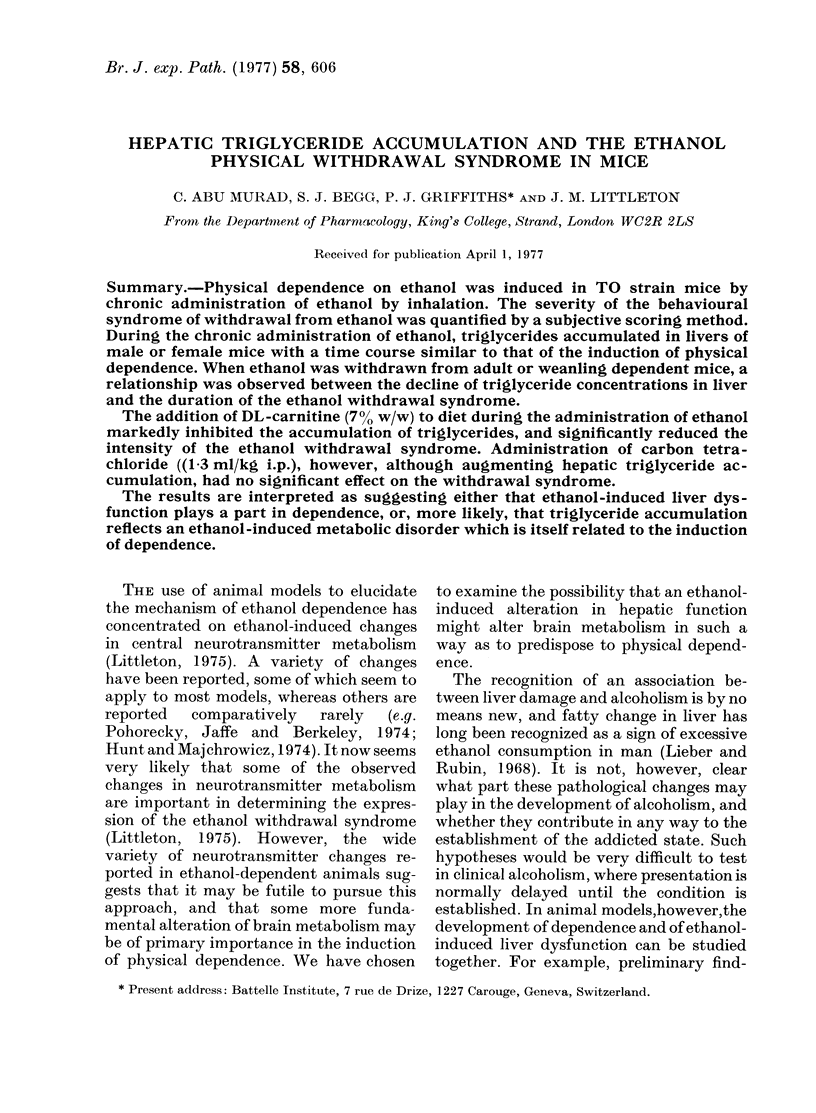

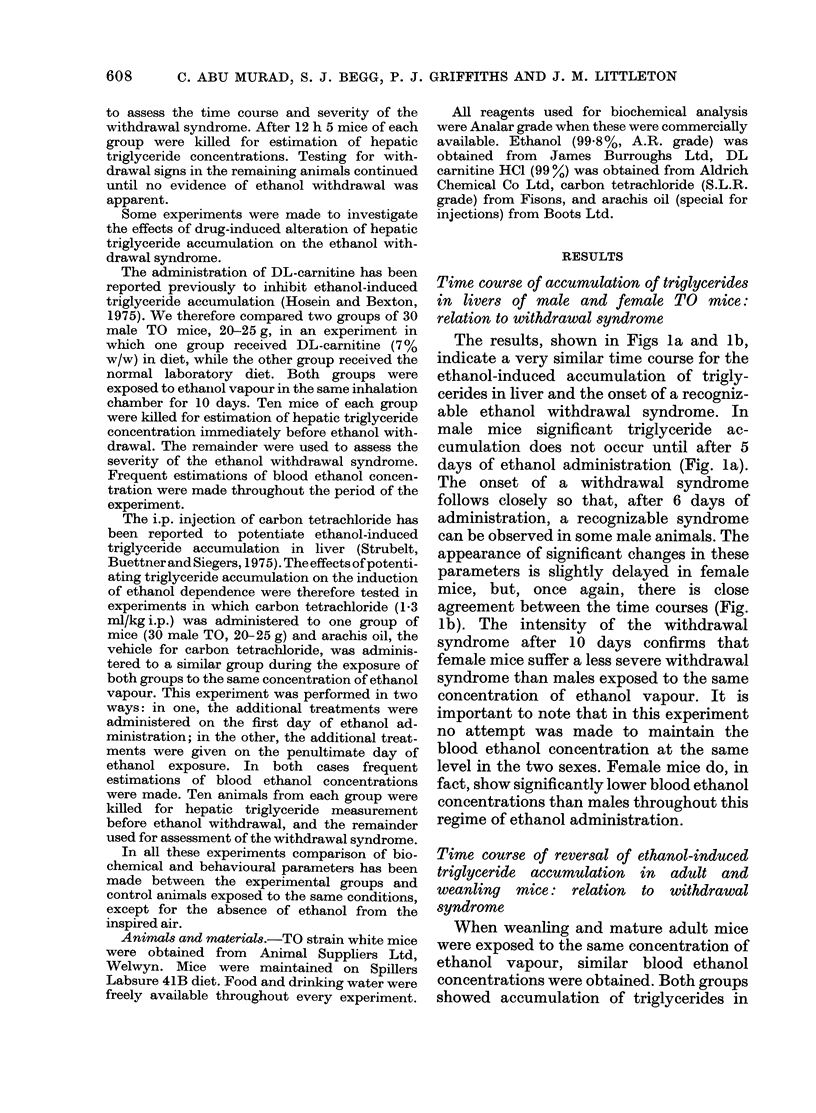
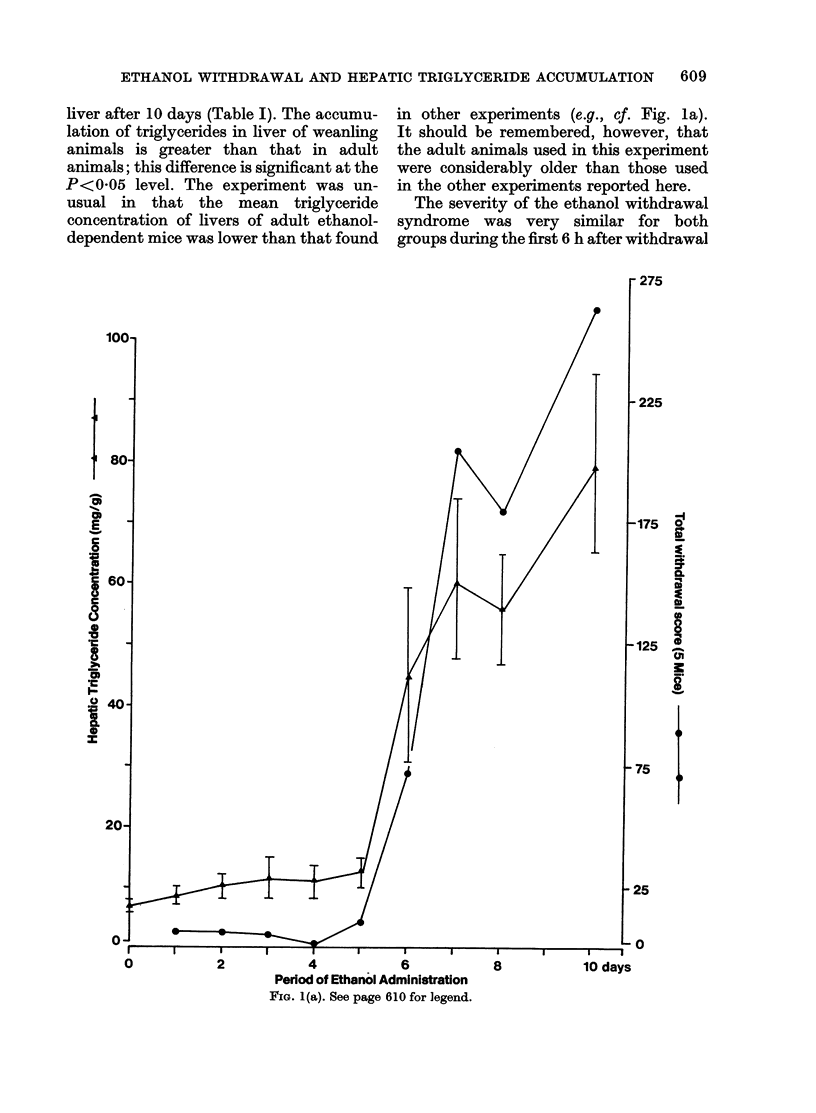
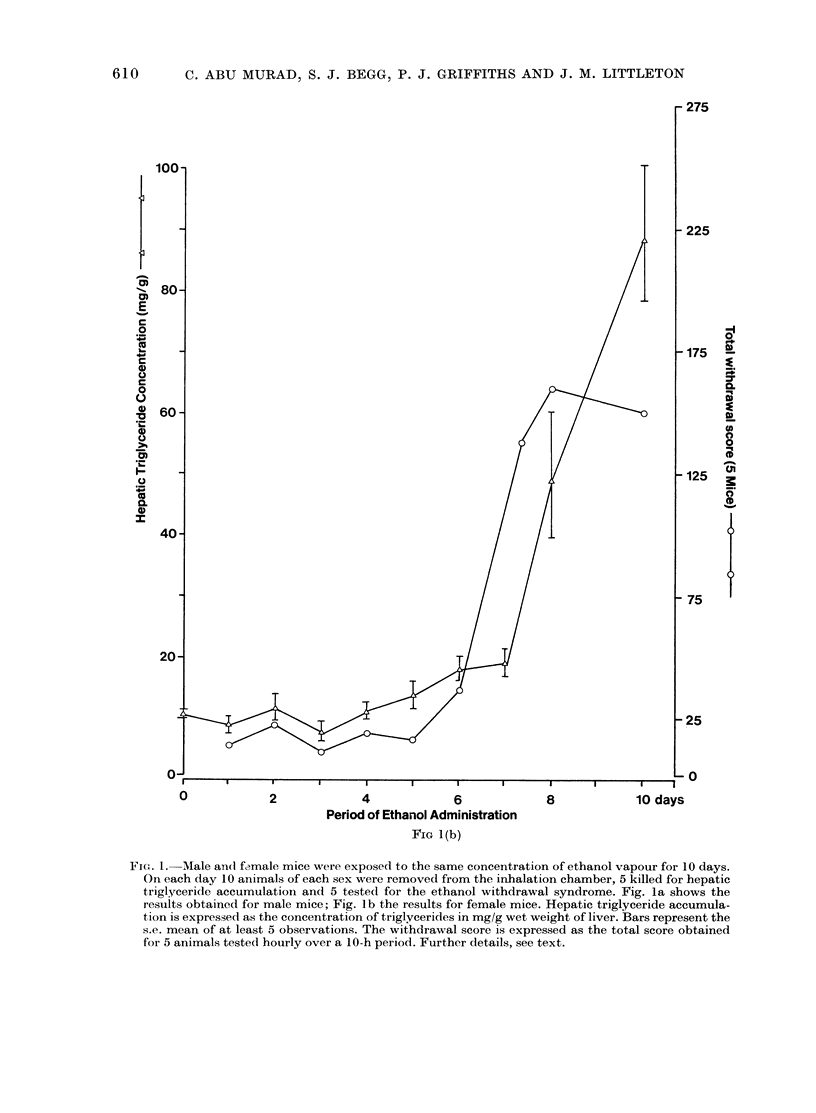
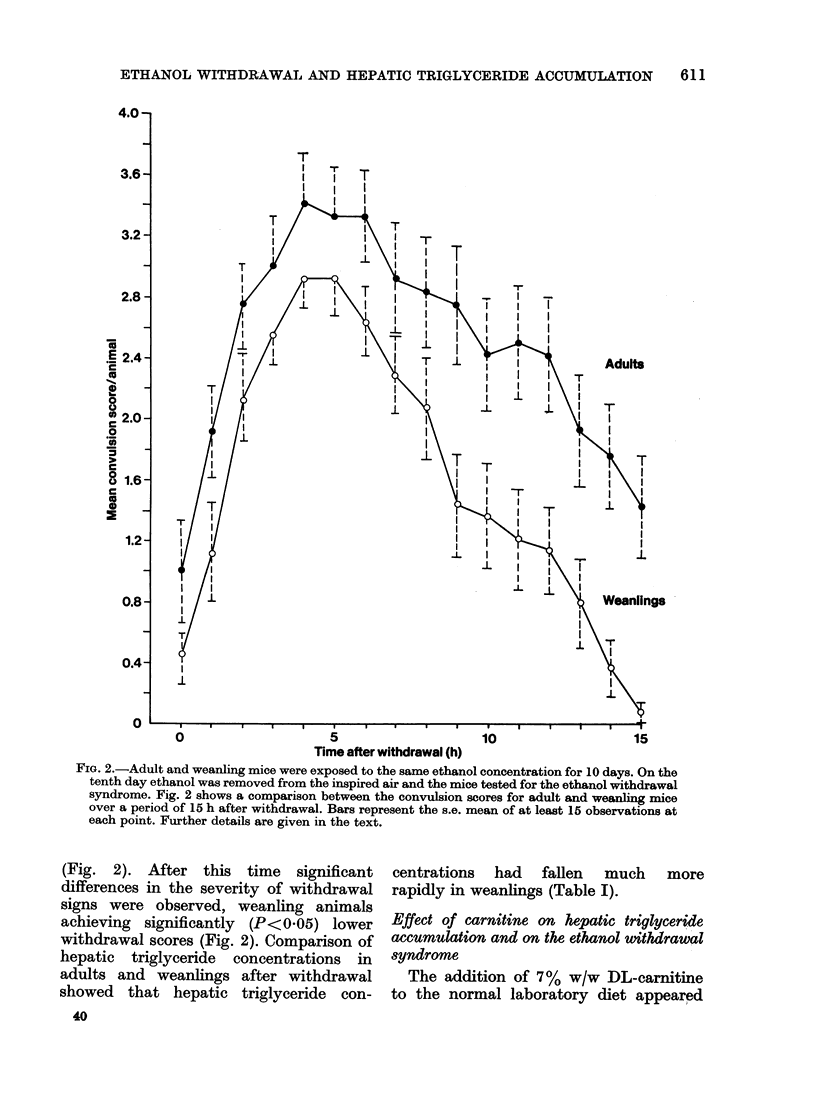
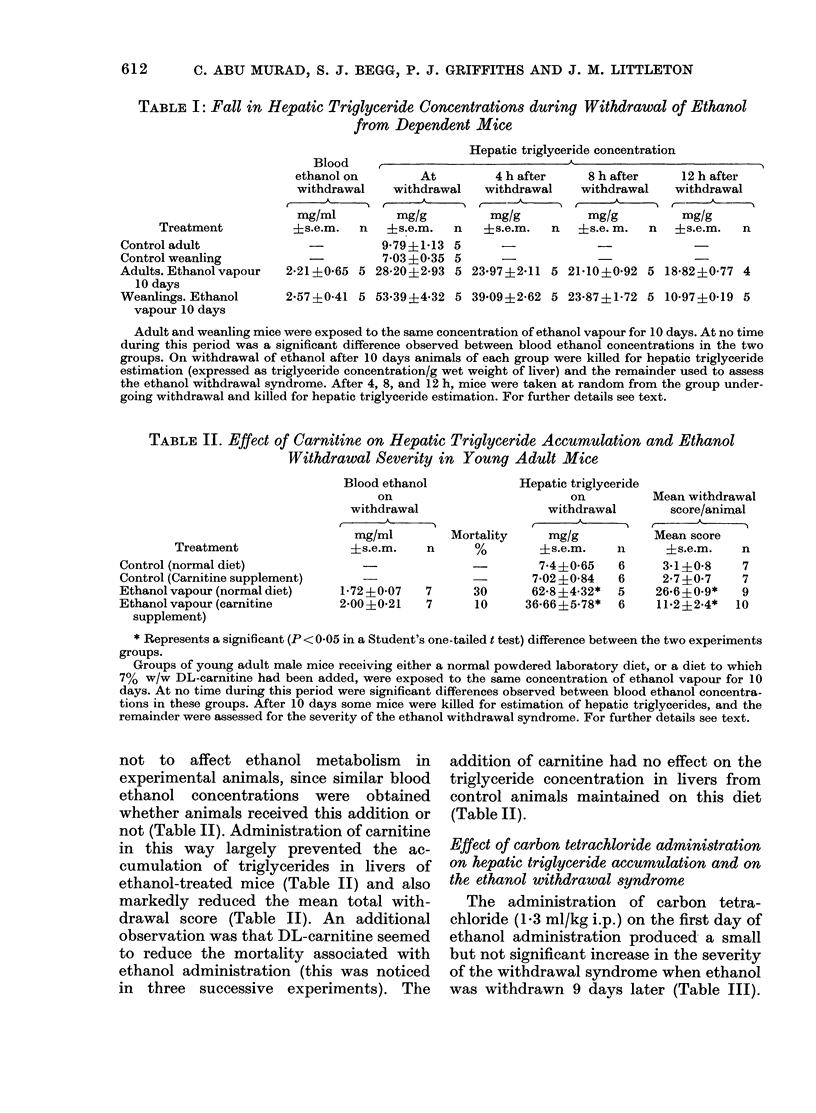
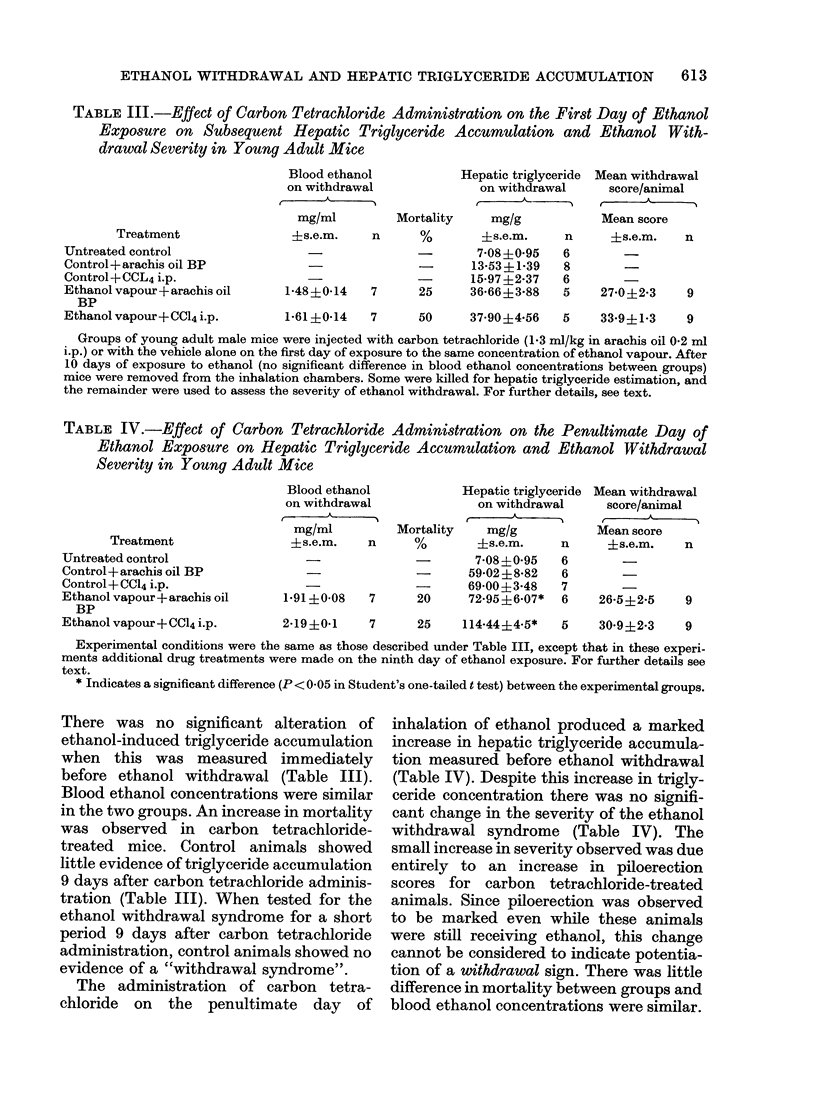
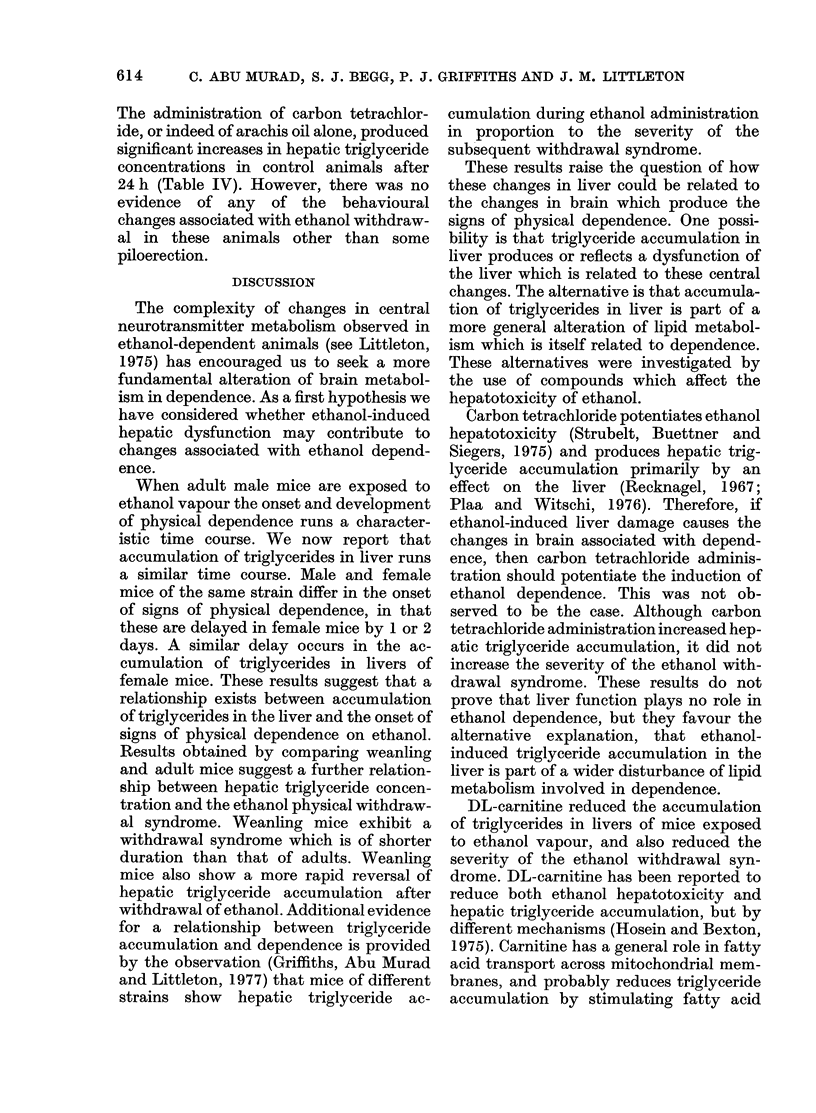
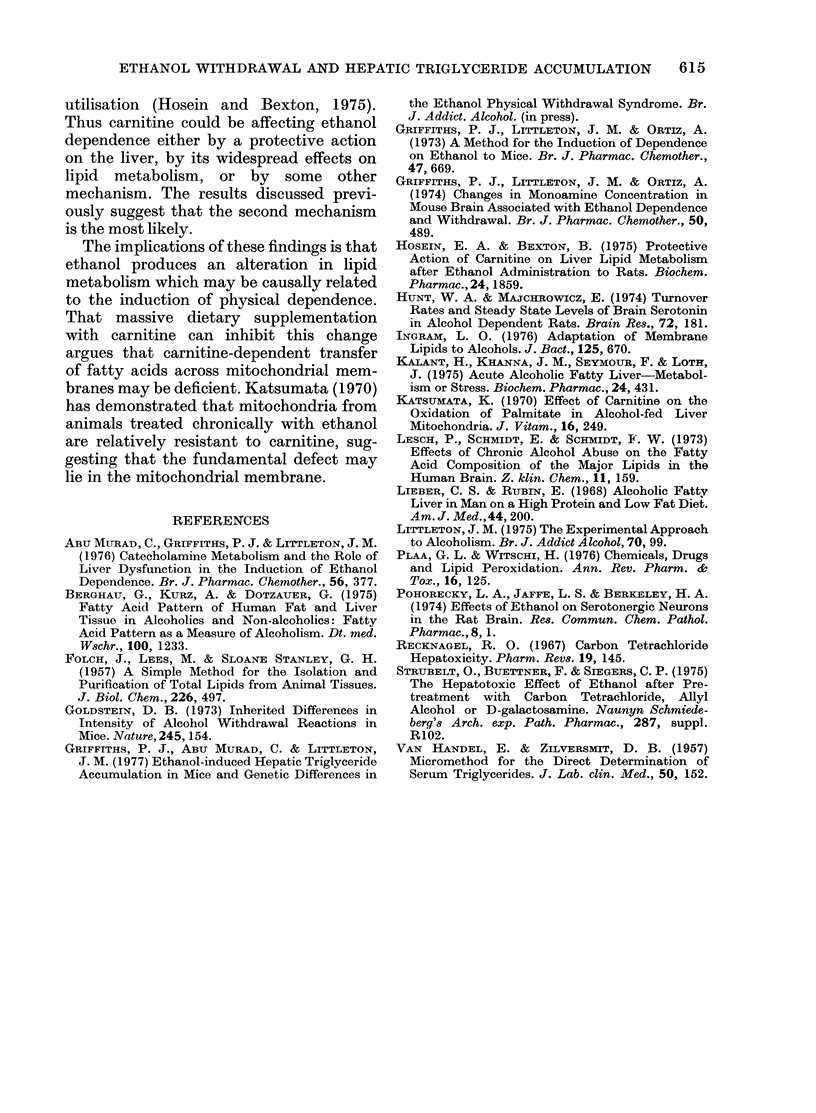
Selected References
These references are in PubMed. This may not be the complete list of references from this article.
- Berghaus G., Kurz A., Dotzauer G. Vergleich des Fettsäuremusters zwischen menschlichem Fett-undLebergewebe bei Nichtalkoholikern und Alkoholikern. Das Fettsäuremuster alsIndikator für Alkoholismus. Dtsch Med Wochenschr. 1975 May 30;100(22):1233–1238. doi: 10.1055/s-0028-1106362. [DOI] [PubMed] [Google Scholar]
- FOLCH J., LEES M., SLOANE STANLEY G. H. A simple method for the isolation and purification of total lipides from animal tissues. J Biol Chem. 1957 May;226(1):497–509. [PubMed] [Google Scholar]
- Goldstein D. B. Letter: Inherited differences in intensity of alcohol withdrawal reactions in mice. Nature. 1973 Sep 21;245(5421):154–156. doi: 10.1038/245154a0. [DOI] [PubMed] [Google Scholar]
- Griffiths P. J., Littleton J. M., Ortiz A. Changes in monoamine concentrations in mouse brain associated with ethanol dependence and withdrawal. Br J Pharmacol. 1974 Apr;50(4):489–498. doi: 10.1111/j.1476-5381.1974.tb08582.x. [DOI] [PMC free article] [PubMed] [Google Scholar]
- Hosein E. A., Bexton B. Protective action of carnitine on liver lipid metabolism after ethanol administration to rats. Biochem Pharmacol. 1975 Oct 15;24(20):1859–1863. doi: 10.1016/0006-2952(75)90404-9. [DOI] [PubMed] [Google Scholar]
- Hunt W. A., Majchrowicz E. Turnover rates and steady-state levels of brain serotonin in alcohol-dependent rats. Brain Res. 1974 May 31;72(1):181–184. doi: 10.1016/0006-8993(74)90665-9. [DOI] [PubMed] [Google Scholar]
- Ingram L. O. Adaptation of membrane lipids to alcohols. J Bacteriol. 1976 Feb;125(2):670–678. doi: 10.1128/jb.125.2.670-678.1976. [DOI] [PMC free article] [PubMed] [Google Scholar]
- Kalant H., Khanna J. M., Seymour F., Loth J. Acute alcoholic fatty liver--metabolism or stress. Biochem Pharmacol. 1975 Feb 1;24(3):431–434. doi: 10.1016/0006-2952(75)90234-8. [DOI] [PubMed] [Google Scholar]
- Katsumata K. The effect of carnitine on the oxidation of palmitate in alcohol-fed rat liver mitochondria. J Vitaminol (Kyoto) 1970 Dec 10;16(4):249–252. doi: 10.5925/jnsv1954.16.249. [DOI] [PubMed] [Google Scholar]
- Lesch P., Schmidt E., Schmidt F. W. Effects of chronic alcohol abuse on the fatty acid composition of major lipids in the human brain. Hepatocerebral degeneration II. Z Klin Chem Klin Biochem. 1973 Apr;11(4):159–166. doi: 10.1515/cclm.1973.11.4.159. [DOI] [PubMed] [Google Scholar]
- Lieber C. S., Rubin E. Alcoholic fatty liver in man on a high protein and low fat diet. Am J Med. 1968 Feb;44(2):200–206. doi: 10.1016/0002-9343(68)90151-4. [DOI] [PubMed] [Google Scholar]
- Littleton J. M. The experimental approach to alcoholism. Br J Addict Alcohol Other Drugs. 1975 Jun;70(2):99–122. doi: 10.1111/j.1360-0443.1975.tb00016.x. [DOI] [PubMed] [Google Scholar]
- Plaa G. L., Witschi H. Chemicals, drugs, and lipid peroxidation. Annu Rev Pharmacol Toxicol. 1976;16:125–141. doi: 10.1146/annurev.pa.16.040176.001013. [DOI] [PubMed] [Google Scholar]
- Pohorecky L. A., Jaffe L. S., Berkeley H. A. Effects of ethanol on serotonergic neurons in the rat brain. Res Commun Chem Pathol Pharmacol. 1974 May;8(1):1–11. [PubMed] [Google Scholar]
- Recknagel R. O. Carbon tetrachloride hepatotoxicity. Pharmacol Rev. 1967 Jun;19(2):145–208. [PubMed] [Google Scholar]
- Strubelt O., Buettner F., Siegers C. P. Proceedings: The hepatotoxic effect of ethanol after pretreatment with carbon tetrachloride, allyl alcohol, or D-galactosamine. Naunyn Schmiedebergs Arch Pharmacol. 1975;287 (Suppl):R102–R102. [PubMed] [Google Scholar]
- VAN HANDEL E., ZILVERSMIT D. B. Micromethod for the direct determination of serum triglycerides. J Lab Clin Med. 1957 Jul;50(1):152–157. [PubMed] [Google Scholar]


